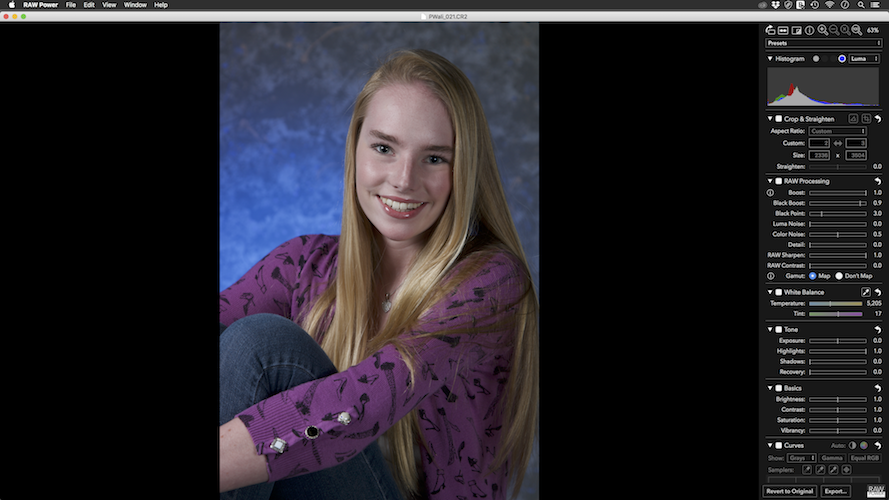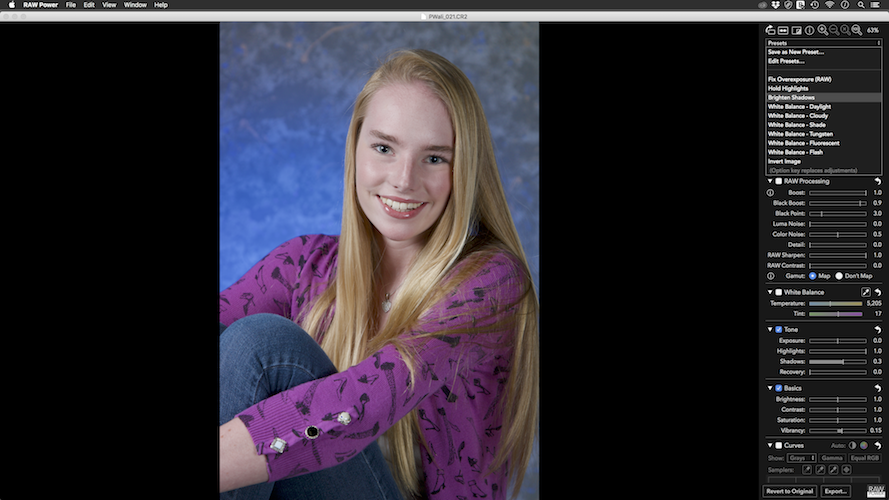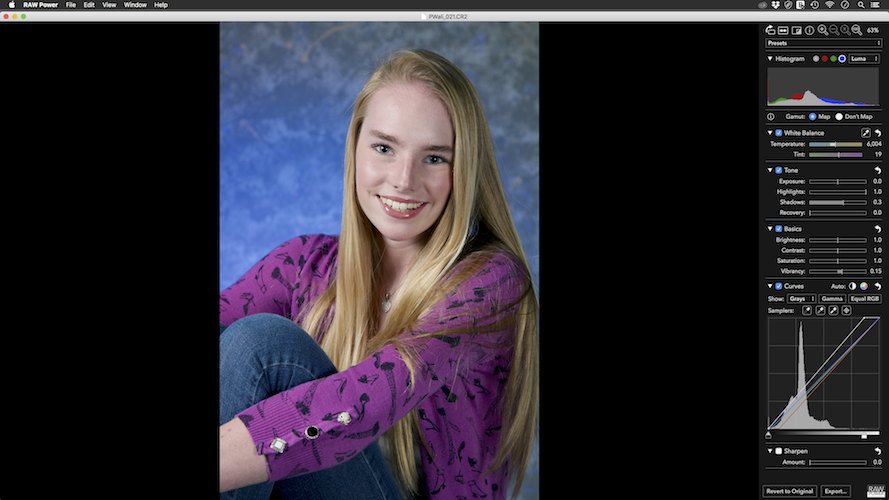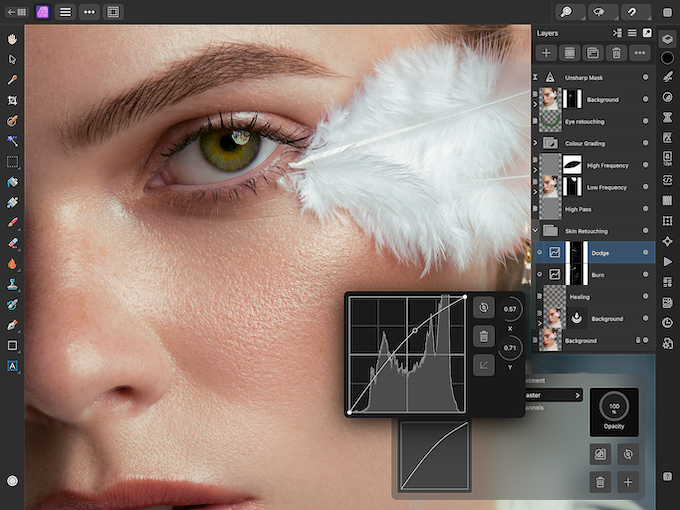Software
When Apple killed off Aperture in 2014, professional and prosumer photographers were left without a native Apple program to perform anything but the most basic image adjustments. With the introduction of RAW Power from Gentlemen Coders, Aperture lovers can rejoice. RAW Power not only brings it back, it extends and enhances the Aperture toolset.
RAW Power functions as a standalone application, an Apple Photos extension and as an Adobe Photoshop Lightroom plugin. It is developed by Nik Bhatt, former Apple Senior Developer of Engineering for Aperture and iPhoto (among other titles). RAW Power uses the Apple Photo RAW file decoder that his team developed. I tested version 1.4.1, primarily using the standalone version on an iMac.
There is also an iOS version of RAW Power that I looked at on my iPad, and which is also available for the iPhone. Both the macOS and iOS versions are available from the appropriate stores. Cost of the macOS version is $20. The iOS is a free download with a $5 in-app purchase available. Once you have the macOS version installed, the Lightroom plug-in is a free download from gentlemencoders.com.
User Friendliness
Both the RAW Power standalone and Photo extension workspaces look like the current Photo workspace. Both workspaces are far more attractive and usable than my (vague) recollection of Aperture. The workspace is dominated by a large preview image with the tool panel to the right. There is no option to rearrange the workspace, but it functions quite well as designed for new users or those moving up to sophisticated RAW processing tools for the first time. The adjustment tools are laid out in a fairly logical order of use from top to bottom, although I don’t normally crop and scale (the topmost tool) an image before I make tonal adjustments. In fact, I generally perform a white balance before any other adjustment, although RAW Power places this tool third in the hierarchy.

The RAW Power standalone workspace. All photos ©Stan Sholik unless otherwise noted.
Beside the new look in RAW Power, the adjustments you make in the program are non-destructive, as they were in Aperture. RAW file adjustments are found immediately below the crop and scale tools. Despite the program name, you can use RAW Power to adjust other image file formats such as TIFF, JPEG, PNG, and more. When you open one of these file formats, the RAW adjustments are no longer visible.
New to this version of RAW Power are presets. Their drop-down menu sits just above the histogram. Gentlemen Coders provides 10 presets with the program and users are able to create and save their own. When you roll over them, they are overlaid on the preview. Clicking on one applies it.

There are ten presets supplied with the program and it is easy to create new presets to create a custom look.
What We Liked
Speaking of the histogram, RAW Power provides some unique and pretty cool clipping indicators. Four circles above the histogram are filled left to right with gray, red, green, and blue if the highlights in luminance and one of the RGB colors is clipped. Clicking one of the RGB circles will show you where that color is clipped. Clipping the gray luminance circle show everywhere highlight clipping occurs. Shadow clipping is shown with a single dark blue overlay for any and all colors.
RAW Power has also found a way to “outsmart” an automatic Apple adjustment. When you adjust the highlight slider down to recover highlight information, the Boost adjustment in the Apple RAW file processor automatically boosts the highlights back up. The topmost slider in the RAW Processing palette allows you to lower the Boost adjustment and recover more highlight information. About halfway or a little less worked for me.
There is also a powerful Curves tool in RAW Power. Two Auto buttons are available for quick changes. The black-and-white button to the left sets white and black points while the RGB button sets white and black points for each color, effectively removing color casts. There are also eyedropper samplers if you prefer to do these corrections yourself. You can also sample anywhere in the image with a fourth sampler and drop a point on the curves of each channel. Going to a specific channel you can adjust only that color.
But wait, there’s more. For advanced users, a button allows you to apply the curves adjustments to gamma-corrected or linear data. There is another button whose default setting is Equal RGB, meaning adjustments to the curves are applied equally to all channels. The option for this button is Luminance, which is an automatic conversion from RGB to Lab space. In Luminance mode, the curves adjustment is applied only to luminance values, eliminating the introduction of color tints that can occur with RGB curves adjustments. This level of sophistication is present throughout RAW Power.
And if you are using images in your iCloud Photo Library, the Mac and iOS versions of RAW Power synchronize your edits through iCloud. You can edit on either device and pick up the edits on the other.
What We Didn’t
Taken one slider at a time, RAW Power delivered on my expectations. I did have some issues with strong off-color tints being added in studio portraits using the auto RGB button in Curves, as well as overexposure created with the auto black and white button. These were easily corrected with other tools.

The Curves tool can automatically set white and black points and remove color casts, as well as show gamma-corrected or linear data curves and convert to Lab color space.
However, I did miss some things found in other RAW file programs. One is the lack of thumbnails of the other images in a folder. This isn’t an operating system limitation since Photos presents thumbnails below the preview image.
RAW Power at this point is a powerful file processor for one image at a time. This ties to another missing feature—the ability to adjust one image and easily copy and paste the adjustments into similar images. Even in the standalone app where you can copy adjustments, you must open one image at a time to paste the adjustments into others.
With the availability of other sophisticated controls, I missed the ability to convert a color image into monochrome. With the tools available in RAW Power it should be possible to produce some awesome black and white conversions.
Promised in RAW Power 2.0 however, scheduled for this fall, is a full file browser with thumbnails, the ability to copy and paste adjustments to multiple images, monochrome conversion, and more.
How It Compares
If there are professionals who are nostalgic for the old Aperture or prosumers looking for better RAW file processing than they are getting from Apple Photos, RAW Power deserves a look, particularly given the price point. And iPhone and iPad users who are determined to photograph and edit images on their devices will benefit from the iOS version of the program. But at this point, early in the history of RAW Power, photographers with the need to edit large numbers of RAW format files are better served with other, pricier software.




